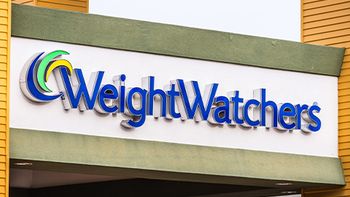
- Pharmaceutical Commerce - April 2010
Optimization of 2-8 Degrees Celsius Controlled-Temperature Small Parcels
Shipment of temperature-controlled clinical trial materials, medicinal products, vaccines, and medical devices containing pharmaceuticals require proper packaging to ensure controlling the temperature of the payload within a specific temperature range during its distribution. Refrigerated products often require 2 to 8 ºC control during shipment and storage. Numerous national and international regulations and recommended practices specify the design and operating parameters of these practices.[1-12].
Controlling the temperature of the payload is usually achieved by optimization of the primary and secondary packaging, configuration, temperature maintaining materials and mass. Engineering and testing resolve these issues, but there are many design options to consider. In addition, the design of the package can interlock with distribution and storage practices—for example, designing a package to hold a temperature for 72 hours or more, in order to take advantage of lower-cost shipping charges. Tradeoffs are common.
This paper makes a case for the use of advanced temperature-maintaining material (specifically, non-petrochemical-based “phase change” material) with reusable capability. This is compared to the use of ice or conventional gel packs, which are often single-use “one and done” packages, and which often require insulation *between* the temperature-maintaining material and the biopharma product.
The optimizations detailed in this paper help to create 2-8 ºC controlled temperature small parcels with the smallest volume, having the lightest weight, are reusable and environmentally friendly, can be quickly packed, have the ability to protect from warmer and colder ambient temperatures and have an economical cost per use.
Controlled temperature small parcels have three main components: an outer container, insulation, and thermal materials to maintain a specified protection temperature range for a pre-determined amount of time. The characteristics to be optimized include total volume, total weight, geometry, and cost per use.
Determination of the payload volume
The first decision that needs to be made is the determination of the size (physical volume and dimensions) of the temperature sensitive goods that need to be shipped. The volume and dimensions of the payload to be shipped have a profound effect on the optimal design of the parcel. Once the size of the payload is determined, the package design optimization can begin.
Determination of the protection temperature time duration
In order to properly design a package for specific needs, the amount of temperature protection time required has to be determined. Add to the anticipated time duration a desired safety factor (48 hours of thermal protection for next day air would protect a package lost for a day). The longer the time duration required the larger and heavier the parcel will become; but also the cost of shipping goes down when the amount of time a package can be in transit is increased. It is to be noted that materials exist that will create a wide range of temperatures and durations. The needed upper and lower temperature limits and time duration should be determined. In addition the anticipated ambient temperature the package will experience should be communicated. The inside volume of the package should be fully utilized. Optimized packages should not ship air! The lack of using the total payload capacity or having to use insulation in the interior of the parcel should be avoided. Parcels can be designed to simultaneously protect from colder and warmer ambient temperatures so if you are shipping from northern Canada to Australia in February a package can be designed accordingly.
With these four pieces of information, payload volume, protection temperature range, expected ambient temperature conditions, and protection temperature time duration with safety factor, the design of the package can now be optimized.
The outer container
The outer container of the parcel can be one of several materials and of greatly differing qualities. Corrugated paper is inexpensive, easily recyclable and has limited durability which reduces the number of times it can be used. Corrugated paper is particularly vulnerable to water damage which involves a risk in shipping. Medium-density polyethylene (MDPE) makes an impressively durable, reusable (50 to 100+ uses), and recyclable outer container. More permanent outer containers such as commercial portable “coolers” (with brand names like Coleman or Igloo) or locking cases can be employed. While this option adds more cost, the benefits of robustness or locking security may be necessary for some applications. An outer container suitable for a specific application should be selected based on the elements it will experience, the number of anticipated uses, and its outer container physical protection needs.
The cost per use of the outer container is obtained by dividing its cost by the expected number of uses. A factor to be considered is the lowest cost per use for the outer container that meets ones requirements.
Total small parcel volume
The total volume (physical size and/or dimensional weight) of a shipping container involves costs. Larger and heavier packages cost more to ship. Larger packages use more storage space, which also has a cost. It is desirable to minimize the total volume and weight of the parcels in order to save costs. The two parts of the package that carry significant dimensional costs are the insulation (which affect mostly volume) and the temperature maintaining materials (which affect weight and volume).
Temperature maintaining materials optimization
Phase change materials (PCMs): PCMs are materials that have their latent heat of fusion (for solid/liquid transitions) exploited to maintain temperatures. What does this mean? When most materials are heated from solid to liquid, there is a certain amount of heat necessary to liquefy the material after it has reached its melting temperature. The same amount of heat is removed from a liquid to create a solid. The amount of heat required to change a liquid to a solid phase or a solid to a liquid phase is called the latent heat of fusion.
The most common and familiar PCM is water which will be used as our example to explain phase-change materials. Water exists in the liquid state. Solid water is ice, and gaseous water is steam.
The physical values of importance of PCMs are heat capacity of a solid, heat capacity of a liquid, latent heat of fusion and transition temperature.
The heat capacity of a solid has units of Joules / (gram * ºC). Ice (solid water) has a heat capacity value of 2.1 Joules / gram * ºC. This means that 2.1 Joules added to (or removed from) one gram of ice will change the temperature of the ice 1 ºC. Ice does not just exist at 0 ºC. Ice can be cooled below zero ºC.
The latent heat of fusion is the amount of heat (energy) required to completely transition a solid material to liquid (or vice versa) while the material remains at its constant (or relatively constant) transition temperature. Solid/liquid transition temperature is the temperature a material remains while in solid/liquid transition. Water has a solid/liquid transition temperature of zero ºC. The units of latent heat of fusion are Joules/gram. Water has a latent heat of fusion value of 334 Joules/gram. Note there is not a ºC in this unit as the temperature of water does not change while it is in transition. Water can absorb or release 334 Joules per gram while it is in solid/liquid transition (melting or freezing).
The liquid form of water has a heat capacity value of 4.2 Joules/(gram * ºC). This means that 4.2 Joules added to (or removed from) one gram of liquid water will change the temperature of the liquid water 1 ºC.
It is to be noticed that one gram of solid/liquid water in transition has a latent heat value of 334 Joules per gram and liquid water has a heat capacity of 4.2 Joules / (gram * ºC). This means that one gram of ice can cool 1 gram of water from 79.5 ºC to zero ºC (334 Joules/gram / 4.2 Joules/(gram*ºC) = 79.5 ºC).
Water has a solid/liquid transition temperature of zero ºC. Special methods need to be employed to use water in solid/liquid transition to protect a payload between 2 and 8 ºC because the transition temperature is outside the protection temperature range. Without liquid water as a thermal buffer or excessive insulation (either of which add considerable shipping costs by weight or volume), packages that use ice are extremely susceptible to allowing a payload to fall below 2 ºC.
If someone used 1,000 grams (1kg) of completely frozen ice warmed to zero degrees to protect a payload from heat while maintaining a protection temperature of 2 to 8 ºC the ice could absorb 334,000 Joules (1000 * 334 Joules / (gram * ºC) = 334,000 Joules) while it transitioned from solid to liquid (melted) and absorb 33,600 Joules (8 ºC *1000 grams * 4.2 Joules / (gram * ºC) = 33,600 Joules while the 1,000 grams of water warmed from 0 degrees to 8 ºC. That’s a total of 367,600 Joules. To provide the same temperature protection and use just liquid water starting at 2 ºC one would need 14,587 grams of water, [(367,600 Joules / 4.2 Joules / (gram * ºC)) / 6 ºC = 14,587 grams of water].
The difference of 1 kg to 14.587 kg is enormous when it comes to shipping. The added cost of shipping extra volume and mass of temperature maintaining materials that do not change phase is significant. Optimized packages use the minimum weight of required temperature maintaining materials.
To illustrate how to use change of phase to protect from colder ambient temperatures imagine you need to protect a payload in the protection temperature range of -8 to -2 ºC using liquid water. The system would be dependent on the ambient temperatures always being below -2 ºC or the payload would warm above -2 ºC. We will use one 1,000 grams (1kg) of completely liquid water at zero ºC to protect a payload from cold while maintaining a protection temperature of -8 to -2 ºC. The water would release 334,000 Joules (1000 * 334 Joules / (gram * ºC) = 334,000 Joules) while it transitioned from liquid to solid (freezes) and releases 16,800 Joules (8 ºC *1000 grams * 2.1 Joules / (gram * ºC) = 16,800) Joules while the 1,000 grams of ice cools to -8 ºC. That’s a total of 350,800 Joules. To provide the same temperature protection and use just solid ice starting at -2 ºC you would need 27,841 grams of ice! [(350,800 Joules / 2.1 Joules / (gram * ºC)) / 6 ºC = 27,841 grams of ice].
The difference of 1 kg to 27.841 kg is enormous when it comes to shipping. Once again, the added cost of shipping extra volume and mass of temperature maintaining materials that do not change phase is very significant.
Water is inexpensive and readily available in the U.S. However; safe biodegradable PCMs exist with a wide range of solid/liquid transition temperatures. If ice is used to protect a 2-8 C payload from heat, it depends on a large amount of liquid water for thermal buffer protection, volumes of insulation or air separating the ice from the payload, added preparation time to warm up when it is removed from conventional freezers, and does not have the ability to protect the payload from colder ambient temperatures. If a parcel spends part of its travel in an airplane, the odds that the package will be subjected to temperatures at or below zero ºC is extremely likely.
Simply stated, the thermal maintenance materials that provide the required thermal protection by changing phase have the smallest volume and least mass, which optimizes the shipping costs and product thermal protection. This results in the most cost effective passive temperature maintenance in the temperature-controlled small parcels. The use of a solid PCM to provide protection against warmer ambient temperatures and a liquid PCM to provide protection against colder ambient temperatures will control the payload at the required temperature. Employing re-usable PCM products will optimize the shipping costs, offer the best thermal protection, and provide an optimized cost per use.
Insulation volume optimization
Insulation is a large portion of the total volume of temperature-controlled packaging. Insulation generally has a greater effect on total volume than total weight of the package. The higher the quality of the insulation used (in terms of low thermal conductivity or its reciprocal, high R-value) the more the total volume of the package can be minimized. Higher-quality insulation costs more money; this is problematic for single-use packages, which usually do not employ quality, economical, recyclable insulation, and so end their service lives in landfills. High thermal-protection quality, reusable, recyclable insulations are a part of environmentally friendly packages with economical costs per use. Reusable high quality insulation is part of optimized economical packages.
Insulation - If the volume of a temperature-controlled payload and temperature maintaining materials are held constant, as the thickness of a single type of insulation increases around the payload and PCMs, the amount of time that a package will maintain temperature increases. However, the thickness of the insulation will approach an optimal thickness where the time that a package will thermally protect a payload will be maximized. As the thickness of the insulation increases from that optimal thickness, the amount of time a package will thermally protect the payload will begin to decrease. There is a relationship between insulation thickness and the overall dimensions of the parcel. That ratio (of insulation thickness to overall package outer dimensions) has a profound effect on the performance of a parcel. The specifics of insulation design are beyond the scope of this paper.
Geometry optimization
The amount of heat that can enter a package is dependent on temperature difference and surface area. If the surrounding temperature is the same as the temperature inside the box, no heat transfer occurs. We wish to minimize the surface area in proportion to the volume of the box. The rectangular prism shape that holds the most volume with least surface area is a cube. Optimized geometry of rectangular prism boxes for temperature sensitive shipping are cubes. Also, any rectangular prism has 8 corners. This is true of a small box or a standard warehouse. The effects of edges and corners have a greater effect on smaller packages. This is why creating very small parcels with thermal protection is very difficult.
Economics
PCMs cost more than water. While PCMs are not prohibitively expensive, it is economical to reuse them. In addition, because of their multiple use PCMs offer a more economical value on a per use basis. Hence, economically optimized packages use reusable PCMs.
There are four main and one secondary cost factors affecting distribution and shipping expenses: cost per use; outbound freight cost; packing time; and warehouse expense.
1) Cost per use: A typical “one and done” package with conventional components costs around $18, which is also its cost per use. Packages using the advanced phase-change materials described in this article, such as the Greenbox from Entropy Solutions, combined with durable carton materials cost around $109, but can be reused over 50 times. Using a more conservative figure of 15 uses, the cost per use drops to $7.26. The secondary cost of reuse, however, is the cost of returning the package to its source, which average $6.80 nationally. Adding these together gives a total per unit cost of $14.06, a 22% cost savings over single-use packages.
2) Outbound freight cost: Because of the lower number of components of a package with advanced PCMs (specifically, the need NOT to insulate between the PCM and the payload), freight cost is lower. The Greenbox cited above has the following comparison to a conventional package with expanded polystyrene insulation and gel packs:
3) Packing time: Many traditional convection based shipping systems have 18+ packing steps and take approximately 2 minutes to pack — that does not include the time required to let the gel pack or petroleum-based PCM equilibrate. Equilibration time varies between 15-30 minutes and is required to try and reduce the potential for thermal shock in convection based systems. Greenbox systems utilize the principal of conduction, thus not requiring any equilibration time. But more importantly, Greenbox systems have 6 steps and are packed in an average of 28 seconds. Assuming the average worker packing temperature sensitive products earns $25.00/hr, the difference in packing time can amount to around $80,000 less annually.
4) Warehouse expense: A characteristic of most conventional temperature-controlled packages is that many different dimensions are necessary to account for any change in mass or volume. Advanced PCMs do not require a comparable variety of components, and have smaller overall dimensions. The savings from this source can amount to tens to hundreds of thousand dollars annually, based on warehouse space charges.
REFERENCES
Bishara, R.H.: Good Cold Chain Management Practices for Clinical Trial Materials / Investigational Medicinal Products. American Pharmaceutical Outsourcing 9 (2), pp. 14 — 20 (2008).
Bishara, R. H.: Cold Chain Management — An Essential Component of the Global Pharmaceutical Supply Chain. American Pharmaceutical Review, Vol. 9 (1), pp 105 – 109 (2006).
World Health Organization (WHO) Guidelines on the International Packaging and Shipping of Vaccines, December 2005.
Taylor, J., and Holloway, I.: Transportation of Biological Products: European Regulations and Guidance. American Pharmaceutical Outsourcing 8 (3),pp116 — 21 (2007).
Holloway, I.: “Understanding and Complying with MHRA Guidelines.” IQPC 8th Annual Cool Chain Europe Conference,Brussels, Belgium, January 28, 2009.
Skuce, S.: “Health Canada’s Guidelines for Temperature Control of Drug Products During Storage and Transportation.” IQPC 7th Annual Cold chain Management and Temperature Control Summit, Toronto, Canada, February 26, 2009.
Motta, R.: “Cold Chain Management Requirements and Recommendations.” PDA Pharmaceutical Cold Chain Management Conference, Bethesda, Maryland, March 23, 2009.
USP <1079> Good Storage and Shipping Practices, U.S. Pharmacopeia (USP) 28,Suppl.(2), November 1, 2005.
PDA - Technical Report No. 39 (Revised 2007), Guidance for Temperature-Controlled Medicinal Products: Maintaining the Quality of Temperature-Sensitive Medicinal Products through the Transportation Environment. Supplement, PDA Journal of Pharmaceutical Science and Technology, Vol. 61, No. S-2, July/August, 2007.
Bishara, R.H. and O’Donnell, K.: Developing Temperature Profiles for Medicinal Products in Distribution. Pharmaceutical & Medical Packaging News, p. 38, September 2007.
Lindquist, E.: Reverse Logistics: The future of Reusable Packaging. Pharmaceutical & Medical Packaging News, p. 26 — 28, February 2009.
Ames, H.: Sharing Stability Data and Shipping Outside of Label Claim. Pharmaceutical & Medical Packaging News, p. 24 — 27, April 2009. PC
ABOUT THE AUTHORS
Preston Williams is VP of R&D and Chief Technology Officer for Entropy Solutions, Inc. Previously, he worked for UPS. He holds a BSME from the University of Minnesota, and is a registered patent holder.
Rafik H. Bishara, Ph.D. is the current Chair of the Pharmaceutical Cold Chain Interest Group (PCCIG) within the Parenteral Drug Association (PDA), following a distinguished 35-year career at Eli Lilly as director, Quality Knowledge Management. He is recipient of PDA’s 2007 distinguished Service Award, and the 2008 Distinguished Alumnus Award of the School of Health Sciences, Purdue University, from which he received his PhD in 1972.
Articles in this issue
over 15 years ago
PBMs contact Congress over proposed USPS five-day delivery scheduleover 15 years ago
FDA puts a spotlight on cargo theft of life sciences productsover 15 years ago
New study sets benchmark for post-marketing surveillance processNewsletter
Stay ahead in the life sciences industry with Pharmaceutical Commerce, the latest news, trends, and strategies in drug distribution, commercialization, and market access.





